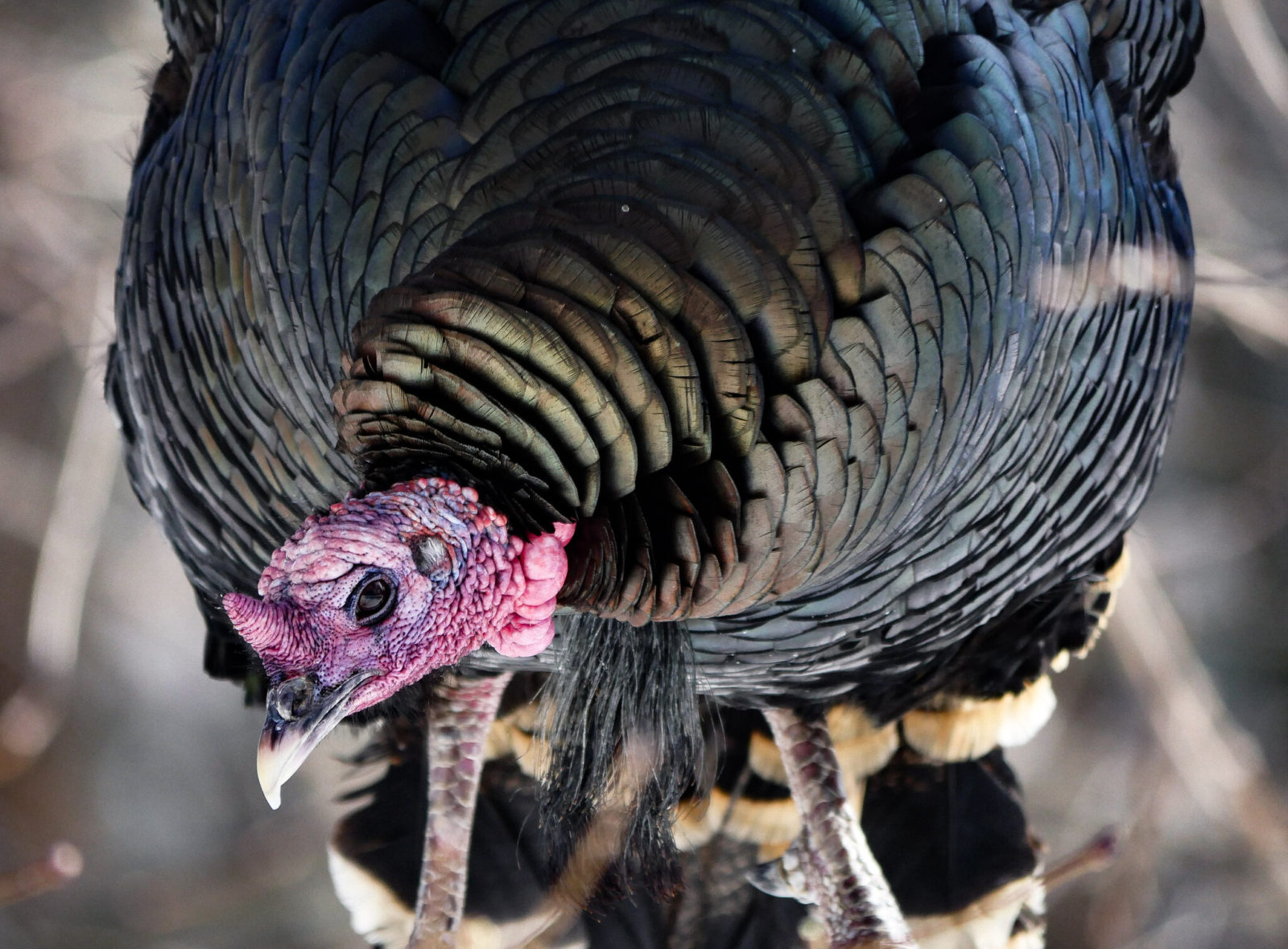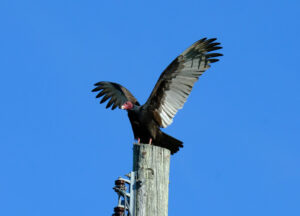In my neighborhood, flocks of wild turkeys wander year-round, stopping traffic with aplomb and making my German-shepherd-mix dog nervous. People put up signs that say, “Drive Like Your Turkeys Live Here.” They’re a fixture, adaptable and thriving in urban and wild settings alike. But as editorial assistant Lia Keener and I dug through the Bay Nature archives, we learned that they’re pretty recent California transplants. For Thanksgiving, here are a few seasonally appropriate stories we’ve covered over the years on turkeys (very broadly defined) to inject some nature and delight into your holiday down time.
Cutt! (See turkey talk, below.)
—Kate Golden, digital editor
Ten thousand years ago, a different type of turkey roamed California; the La Brea Tar Pits are loaded with turkey bones. Now Meleagris gallopavo, the new turkey on the block (as of 1877), is thriving, and taking more than its share of acorns. In this story, originally published in 2012, Courtney Quirin explains how turkey-hunters are being enlisted to help restore some ecological balance—and she also gives you a primer on jakes, toms, jennies, and how to talk turkey.
Meet Vlad, a curious, social San Rafael resident, imprinted on the humans who hand-feed him mealworms, and his fellow underappreciated undertakers. Little is known about the lives of turkey vultures, but lately scientists have discovered some impressive behavioral flexibility.
It might be what the ladies want—or a way to communicate, writes Tony Iwane, who refers to their heads as “a nice piece of non-feathered real estate” in this 2017 explainer.
Turkey tail (Trametes versicolor) is a species of fungus that looks just like the tails of male you-know-who. It’s a bracket fungus, growing in shelves on wood, and its job is to break down lignin or cellulose in rotting wood. Long used in traditional Chinese medicine as a tonic, now scientists are investigating its cancer-fighting potential. T. versicolor: superturkey of the woods? But here’s a Thanksgiving conundrum: there’s an imposter out there, the false turkey tail (Stereum hirsutum). So how can you tell if you have the real thing?
We get some pretty random nature questions here at Bay Nature, and this stumped even naturalist David Lukas. “I would never have imagined putting White-tailed Kites and Wild Turkeys in the same sentence,” he writes in this 2014 shorty.


